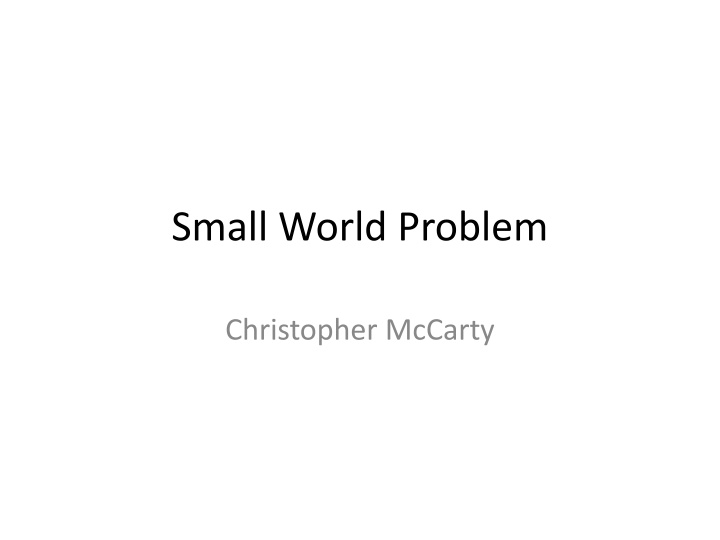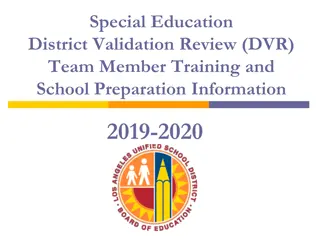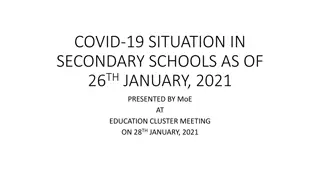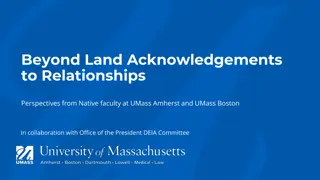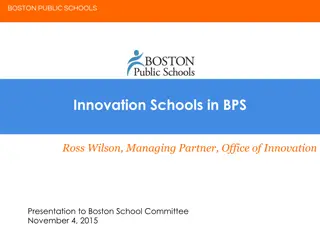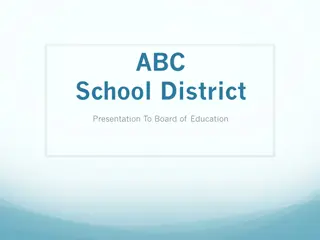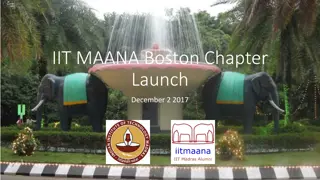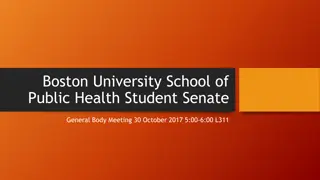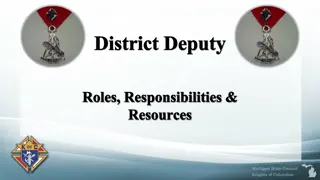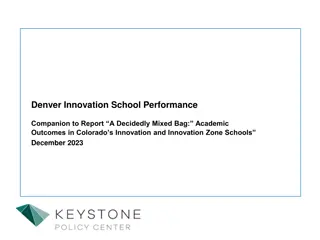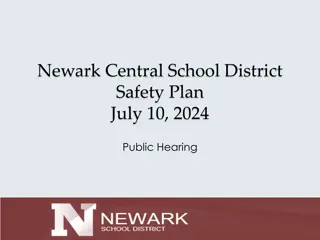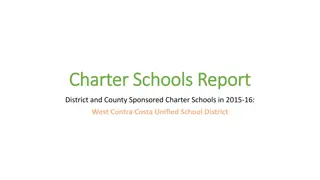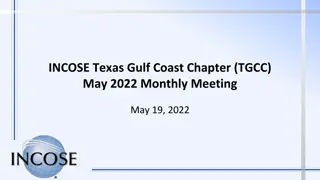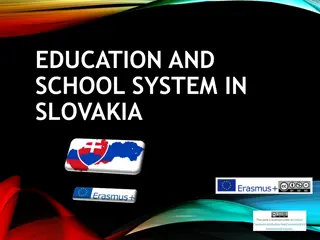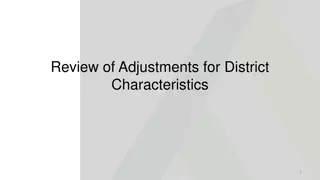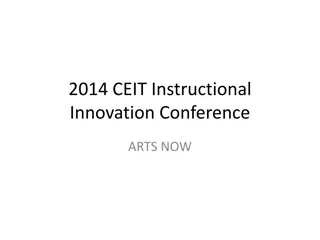Boston Public Schools District Review May 2022
DESE conducted a district review of Boston Public Schools from Fall 2019 to 2022, resulting in key findings and recommendations across various standards. The review process included interviews, focus groups, classroom observations, and collaboration with stakeholders. The final report was publicly released in May 2022, highlighting strengths, challenges, and areas for growth within the school district.
Uploaded on Mar 04, 2025 | 0 Views
Download Presentation

Please find below an Image/Link to download the presentation.
The content on the website is provided AS IS for your information and personal use only. It may not be sold, licensed, or shared on other websites without obtaining consent from the author.If you encounter any issues during the download, it is possible that the publisher has removed the file from their server.
You are allowed to download the files provided on this website for personal or commercial use, subject to the condition that they are used lawfully. All files are the property of their respective owners.
The content on the website is provided AS IS for your information and personal use only. It may not be sold, licensed, or shared on other websites without obtaining consent from the author.
E N D
Presentation Transcript
Small World Problem Christopher McCarty
Small World Phenomenon You meet someone, seemingly randomly, who has a connection to someone you know Person you meet on a plane who went to school with a relative Killworth s example McCarty example Is this a bizarre coincidence or is there an underlying explanation?
Six Degrees of Kevin Bacon http://oracleofbacon.org/ LinkedIn
John Barnes (1969) Networks and Political Process in Social Networks in Urban Situations
Small World Study Jeffrey Travers and Stanley Milgram (1969) An Experimental Study of the Small World Problem, Sociometry 32(4): 425-443 What is the probability that any two randomly selected people know each other?
Method 296 respondents in Nebraska and Boston are asked to send a packet to someone they knew who had the best chance of knowing a target person in Massachusetts The target was a Boston stockbroker 100 respondents owned stocks, the rest were randomly selected There were 453 intermediaries There were no incentives
Method (cont.) The profile contained name, address, occupation, place of employment, college, military service, his wife s maiden name and home town Roster included to prevent looping
Results 217 of the 296 sent the packet on 64 chains were completed (29 percent) with an average length of 5.2 48 percent of the chains passed through 3 people before reaching the target
Characteristics of intermediaries There was a division of labor among the 3 One person was a clothing merchant and handled chains using residence Others were scattered around Boston and used occupation (stockbrokers)
Future study Throughout the article Travers and Milgram suggest a different study where they manipulate the starter and target information
H. Russell Benard, Peter D. Killworth and Christopher McCarty (1982) Index: An Informant-Defined Experiment in Social Structure, Social Forces 61(1): 99-133 50 mythical targets Each started with set characteristics 50 respondents were instructed to select the person they knew with the best chance of knowing the target The respondent had to decide which questions to ask As new information was given it was recorded on the target s profile
Peter D. Killworth, H. Russell Bernard and Christopher McCarty (1984) Measuring Patterns of Acquaintanceship, Current Anthropology 25(4): 381-397 Reverse Small World 500 mythical targets, 400 around the world and 100 in the U.S. Distributions of 10 areas of the world, occupations, sex, age, education, marital status 40 respondents
Suggests line would asymptote around 250. This is another measure of network size
Duncan J. Watts and Steven H. Strogatz (1998) Collective Dynamics of Small World Networks, Nature 393(4): 440-442 Mathematical re-examination of the small world problem Highly ordered networks are re-wired to introduce disorder These lead to highly clustered networks with small path lengths (small world)
Peter Sheridan Dodds, Roby Muhamad and Duncan J. Watts (2003) An Experimental Study of Search in Global Networks, Science 301 (5634): 827-829 Internet based study 18 target people from 13 countries Different occupations 98,847 people registered at web site, about 25% provided personal information 61,168 participants from 166 countries 24,163 chains 384 (1.6% completed) Average chain length was 4.05
Peter D. Killworth, Christopher McCarty, H. Russell Bernard and Mark House (2006) The Accuracy of Smal World Chains in Social Networks, Social Networks 28: 85-96 105 members of survey lab were shown a roster of all other names They indicated if they knew each one For those they did not know they nominated someone who would have the best chance of knowing them
Results Mean length of shortest actual path was 2.3 (S.D. 0.71) 21.7% of the conceptual paths terminated as they included people who did not participate Another 23.7% ended up in loops (i chooses j chooses i) The remaining 54.6% reach completion with mean 3.23 (S.D. 2.06), 40% longer than actual length
